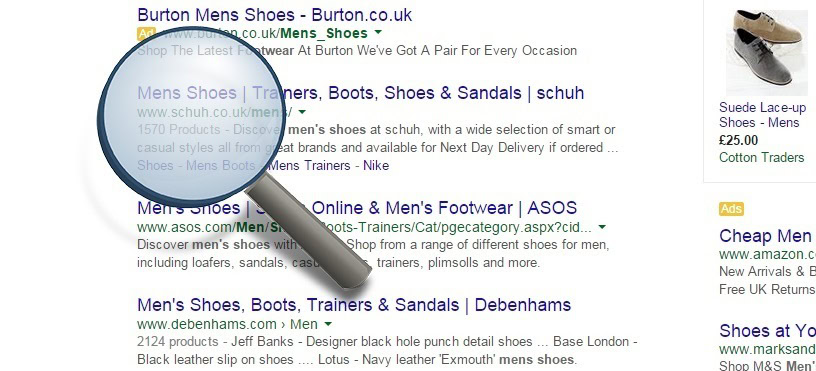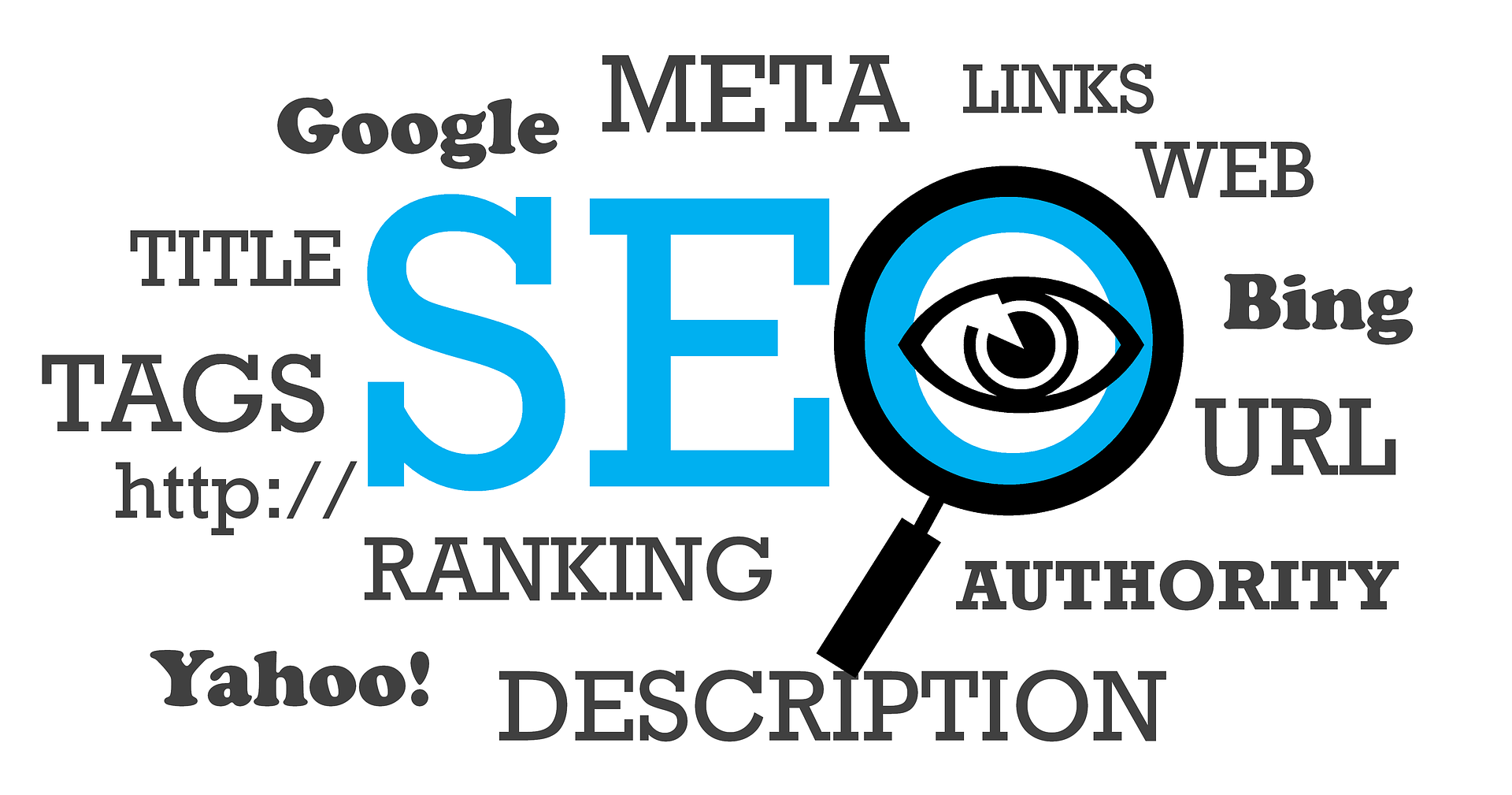SEO is important for any website, but ecommerce websites need to take particular note of SEO best practice, as being found a few ranks higher in Google’s search results can make a huge difference to sales.
Aside from the standard SEO practices that all websites should adhere to, ecommerce websites have a particular set of rules and tricks to stick to. Product pages, category pages, customer input, and a range of other features are all only found on ecommerce websites. And all of this needs to be designed and maintained correctly to gain the SEO benefits available.
So what SEO tips and tricks exist to get your ecommerce store to the top of the search results, and have customers find you online?

Unique product copy
When faced with loading thousands of products online, one thing that many ecommerce retailers do is upload the manufacturer descriptions for each product.
However, from an SEO standpoint, this is a bad idea. As far as Google can see, you are reusing content from elsewhere, and fail to differentiate your website from the competition.
The best thing to do is to come up with your own original copy for product descriptions. It may take a while, but it will be worth it in the long-run when you are outranking your competitors.
Prevent duplicate content
If you have a portion of text on all of your product pages, then that’s not such a good idea. Some online stores may copy and paste some text into product descriptions that applies to all their products – but this is not the best way to do it.
Other than product pages, you should ensure category pages and others don’t have duplicate content. If you’ve nailed your information architecture, and have formed a good website structure, then you should be well on your way. But it’s always worthwhile to make sure you haven’t duplicated any content or copy across the website.
Also, if you can make good use of the rel=”canonical” tag, you can avoid some problems. Google says: “It’s a good idea to pick one URL as your preferred (canonical) destination, and use 301 redirects to send traffic from the other URLs to your preferred URL.”
Site structure
Information architecture is an important part of your ecommerce site, and can really help your SEO efforts. If you make sure there aren’t too many clicks between your home page and products, you won’t be wasting any link authority that can help these pages gain rankings.
Not only that, but if you have the architecture sorted, then it makes future expansions or adding new product ranges much easier. Another benefit of having a great structure is that you can ensure it ensures it’s as easy as possible for a customer to convert.
Google and other search engines will go through your link structure in order to initially find and then index your pages. If you can structure it well, this makes it a lot easier for crawlers to find and index your pages.
Read our post on why SEO should be ingrained into your website below:
Why SEO should be ingrained into your Website Design from the start
Usability
Enhancing your usability will not only create a better ecommerce site overall, but it will help your search engine rankings if customers are pleased.
Google takes note if a user clicks through to a site, and returns to the search results – which indicates a site doesn’t deserve the ranking. If customers are hitting the back button as your website isn’t high on usability, this can be a problem. If they stay there, then this indicates to Google they have found what they are looking for. And Google will reward these sites with higher ranks.
Not only this, but it makes it easier for customers to shop with you, and are happier to convert.
What adds to good usability? An easily searchable site is important, so you will need to build and refine a search function that provides relevant results. Here at Xanthos, we have created our own search function with predictive search features that works very well. Otherwise, implementing understandable and accessible categories will help customers navigate the site. The web design itself is important so that it pleases customers’ eyes, and directs them where they need to go.
Mobile-friendliness
Since April 2015, Google’s search algorithm has taken into account whether your website is mobile-friendly.
If it is mobile-friendly, or has a responsive web design, then you’ll receive preference, and gain higher search rankings.
If you provide a mobile-friendly shopping experience, then it’s another chance to gain higher search engine rankings.
For more information, we’ve written a post on how a responsive web design can help your search rankings – read below:
Why Responsive Web Design can help your SEO and Search Rankings
Customer reviews
Featuring product reviews by your customers can have a number of big benefits for your business as a whole; but it’s also great for SEO.
Essentially, if you can encourage customers to come back and review your products, it’s free content that adds to the freshness and length of copy on the page. This is always a plus in Google’s eyes, as it shows the page is still “alive”, and adds more copy for it to crawl.
It also encourages users to return to the website, and encourages conversions as instead of generic product descriptions, customers can see content generated by those who use and live with the product on sale. Overall, you cannot complain about publically generated content.
Optimise product images
Product images can not only help customers convert, but it can also attract people to your website.
Image search is becoming a lot more popular, and so people may be searching Google for related products by just looking at the images. Therefore, it’s important that your product ranks as an image, and that it is a high-quality image that shows it in the best light. Related keywords into ALT tags of images on websites.
However, ensure these ALT tags stay relevant, and don’t stuff too many keywords in there, as Google will recognise this.
Title tags
Title tags will display in Google to represent what is on your page. If you provide enticing, relevant, and helpful title tags for products and other pages, it can really help your rankings and traffic.
Be sure to include a few important keywords in your title tag, alongside your brand, and it will help get customers searching for relevant products onto your site.
Unique Meta descriptions
Meta descriptions are important within search results, giving more information under the title of your page to those who may be interested. Having unique meta descriptions for your website pages is great for SEO.
On an ecommerce website, it’s likely you have quite a few pages. It can be a hassle to give each page a unique meta description, but the SEO benefits will pay off.
Meta descriptions should be written for humans, and aim to help get your search result click. Be creative, and encourage users to read on. If it can be brief, then it’s not important for it to be long as the copy doesn’t directly impact your rankings. Rather, the description can result in a click from a Google user, which will then help your rankings in the future.
For instance – see below. Which would you click based on the description for “leather corner sofa”?
Anchor text
It’s important that your pages use anchor text well. Whether it’s a product page, a category page, or anything else, it can really make a difference to your SEO.
For instance, instead of linking “click here” to your desired location, you should link from anchor text containing keywords you’d like to rank for. For Xanthos, we would link “web design services” instead of “click here to view web design services”.
URLs
Using URLs that are recognisable to the human eye is much better for SEO, rather than using dynamic URLs which are generated and make no sense.
With a static URL, a human being can determine what may be on the page. By using such a descriptive URL, it helps you add keywords for SEO, whilst also being more useful in general. So instead of having a URL for your product of “yourstore.com/category/pqpl0978?” you could have “yourstore.com/category/yourproductkeyword”.
Another tip is to use hyphens rather than underscores, as Google will read it as a single word, which does not help SEO.
As Google states: “In the world of content management and online shopping systems, it’s common for the same content to be accessed through multiple URLs. With content syndication, it’s also easy for content to be distributed to different URLs and domains entirely. “
Freshen up your pages on a regular basis
If a page has been updated recently, it signals to Google that the page is alive, rather than dead and buried in a dark corner of the website.
The “freshness” of a web page has become a stronger ranking signal over time, and is important to consider for all of your pages.
As mentioned earlier, one of the best and easiest ways to do this is to incorporate user reviews. This is user-generated content, which adds to the freshness, whilst also adding copy which can be crawled.
However, it’s still advisable to change the copy on category and product pages now and again. If you’re strategic, it can be very beneficial to freshen up specific target pages on a more regular basis, to ensure the best rankings possible. You can really set you site apart from competitors who upload their products, and leave it there.
Bonus: Blogging
A blog is a great way to attract customers to your site, whether it’s an ecommerce site or not. However, if you have a good content strategy in place, blogging can have serious benefits for your ecommerce website in particular.
By providing unique, high-quality content, you can bring customers to your website, and begin to build your brand in their mind. If a customer digests your content on a regular basis, and then has a need for one of your products, you will be the first place they look.
Essentially, a blog adds value to customers, and adds to your rankings, as your keyword-optimised blog posts will bring in traffic the rest of your site simply can’t. If you add value to a customer’s shopping journey, they may be inclined to return, and continue to digest your future content.
The trick here is to provide content that is interesting, entertaining, or informative, and still relates to your brand or a particular product. If you can do this, and then link through to the necessary pages on your website, it can prove to be very effective SEO strategy.
For more information on blogging and SEO, read our blog post below:
How and Why Blogging helps your SEO
When building an ecommerce website, it’s important your web designer has SEO knowledge, and is working alongside those who specialise in SEO and marketing to create the most effective website possible.
Here at Xanthos, we build ecommerce websites with SEO ingrained from the start. If you want your ecommerce business to get found online, then get in touch with the team here.







